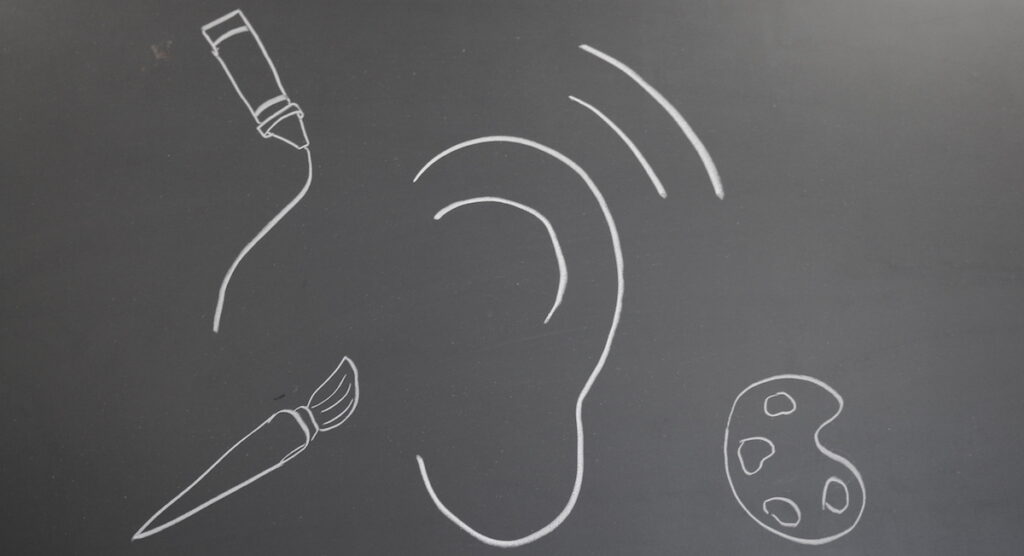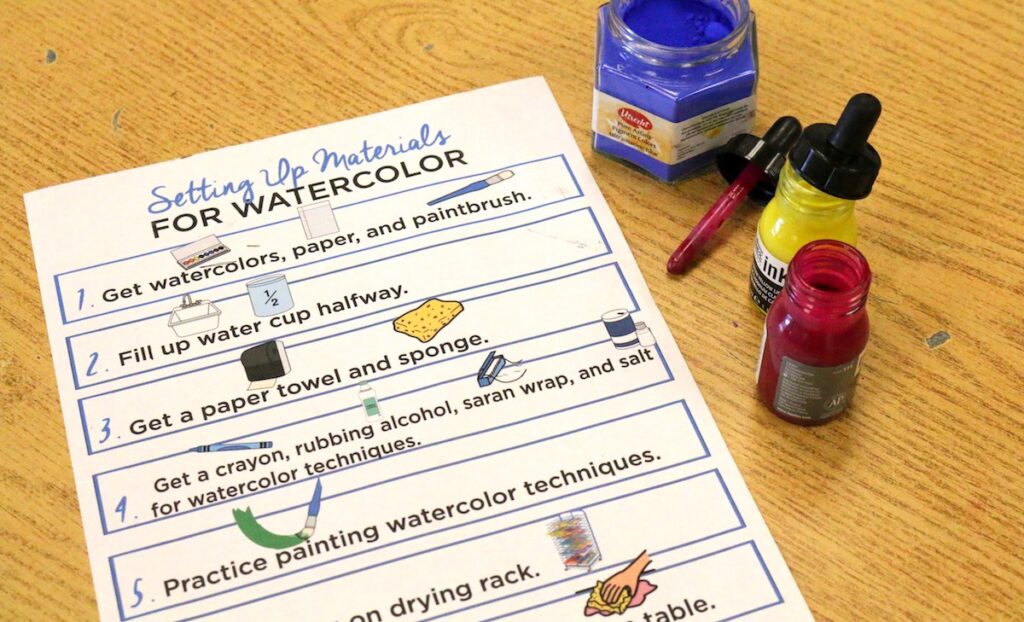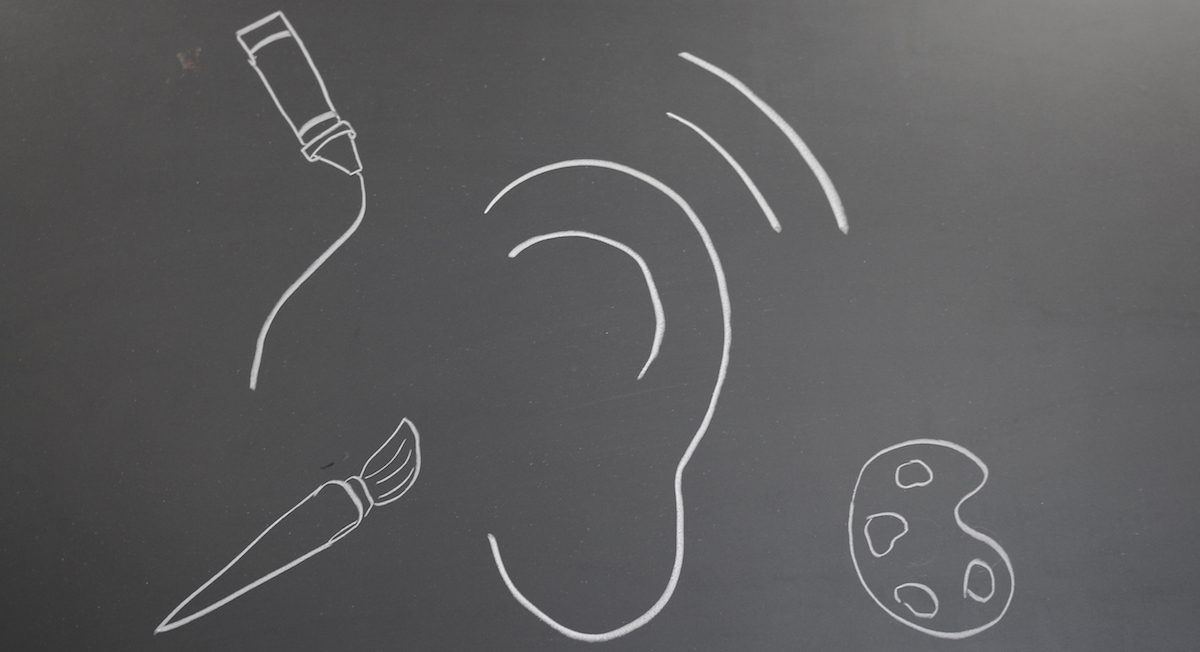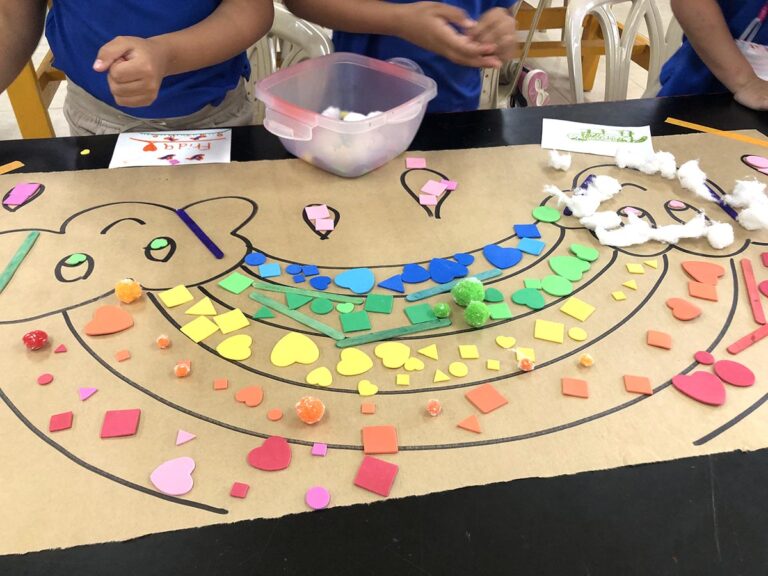Walking into an art room can be overwhelming. There are often hundreds of things happening at once with messes, materials, and students spread throughout the room. Now imagine just seeing the room without hearing the sounds to help make sense of everything. How do you think you would feel?
For students who are deaf or hard of hearing, this scenario is a reality. It’s up to us to learn how to create an environment where these students can maximize their learning.
Check out these 5 strategies your students who are deaf or hard of hearing will benefit from in the art room.

1. Build a relationship with interpreters in your room.
The role of a sign language interpreter, or SLI, is to translate for and speak for your students who are deaf or hard of hearing. Students often build strong relationships with their SLI, and it’s a good idea for you to do the same. The SLI in your classroom may be able to help with strategies and approaches to best reach your student. Students might be more comfortable going to their SLI with their questions and concerns, so having an open line of communication will help you determine what your students need.
In addition, if issues do arise, like the SLI taking on too much work for your student, you’ll have a better chance of resolving them if you’ve already built a positive relationship.
2. Caption everything.
Sometimes we come across cool videos we’d like to share only minutes before class starts. Although this is fine for the majority of our students, it doesn’t work for our students who are deaf or hard of hearing. It’s important that all videos shown are closed captioned. If captioning is not included, students have to split their time watching the SLI and the video, which makes it more challenging for students to learn the content. If you’re using a site like YouTube and a video says it has closed captioning, make sure to preview it ahead of time. Sometimes the captions are computer generated and don’t match the actual content.

There’s no need to shy away from videos. You just want to make sure you’ve planned ahead.
Here are a few tools to help with captioning:
- Use Amara to caption videos created by you and other users.
- Use YouTube to caption your own videos.
- Use a captioning service like Rev.
3. Encourage peer learning.
Because of limited SLIs, you may have multiple students who are deaf or hard of hearing in your classroom at once. More often than not, students who need interpreter support will sit together. This makes sense, but don’t be afraid to mix them up. Students can get into the habit of isolating themselves from their peers. Encouraging them to work in groups with their classmates when possible will benefit students socially and enable them to rely less on their SLI.
4. Over-exaggerate your instruction.
Because students are focusing on both you and the SLI, they need a little extra time to process. Therefore, slowing down and over-exaggerating your instruction can really benefit your students who are deaf or hard of hearing. Being expressive with your hands and body will help students to focus on the main points. At times this strategy might feel like you are playing a game of charades, but it will actually benefit all of the students in your classroom!

5. Use visuals.
Along with over-exaggerating instruction, creating instructional visuals can help your students. This could be as simple as writing down and posting the steps or instructions for the day. Displaying this information in chunks or list form can help students remember the key points of your instruction. And, just like the tip before, this strategy will actually help all students in your classroom.
Ultimately, we want all of the students in our classroom to be successful. With a little planning, we can build a welcoming environment for all students. If you’ve never worked with students who are deaf or hard of hearing, it can be intimidating at first. Using these five strategies will help your students gain the most from their art room experience!
What are your best strategies when working with students who are deaf or hard of hearing?
How do you make students who are deaf or hard of hearing feel comfortable in the art room?
Magazine articles and podcasts are opinions of professional education contributors and do not necessarily represent the position of the Art of Education University (AOEU) or its academic offerings. Contributors use terms in the way they are most often talked about in the scope of their educational experiences.





